Who are the people the BIW-built Arleigh Burke destroyers are named for? We’re often asked. Some are famous, others less so. To bridge that knowledge gap and to clarify some mysteries, we’ve included their images and brief biographies below.
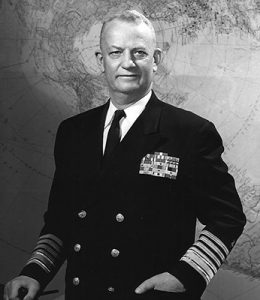 |
ADM Arleigh Burke (1901-1996) was the most daring and inventive commander of destroyer flotillas during WW2, and a key figure in the creation of the modern US Navy. During his service in the Pacific, he served in numerous decisive destroyer actions, and moved on to carrier task force operations in early 1944. Appointed CNO in 1955 – over the heads of many more senior admirals – he adopted ADM Rickover’s concept of a nuclear navy, and championed the Polaris missile program. He served an unprecedented three terms as CNO. Among other claims to fame, he was a key player in the formation of the US Navy SEALs. He was present at the christening of DDG 51 and sailed on her trials. |
 |
DDG 53’s John Paul Jones (1747-1792) is the most prominent naval hero of the Revolutionary war. Born is Scotland, he went to sea at the age of 13, and sailed in various British commercial ships. He became master of his own ship in 1770, but made a decision to settle in Fredricksburg, Virginia after killing a crew member in a mutiny. In 1775, now living in Philadelphia, he volunteered his skills and services to the new Navy. Sailing to European waters in Ranger and later in Bonnehomme Richard, he inflicted significant defeats on the Royal Navy in 1778-1779. After the war ended, he served briefly in the Russian Navy, then moved to Paris, where he died in 1792. |
 |
DDG 54’s Curtis Wilbur (1867-1954) was Secretary of the Navy in 1924-1929. Although he graduated from the US Naval Academy in 1884, he resigned and moved to Riverside, California. He practiced law, became a judge, and eventually served on the California Supreme Court. President Calvin Coolidge chose him as Navy Secretary, where he worked diligently on fleet expansion and modernization, as well as helping establish naval aviation on a firmer basis. On retirement, he joined the Ninth Circuit Court of Appeals in San Francisco. |
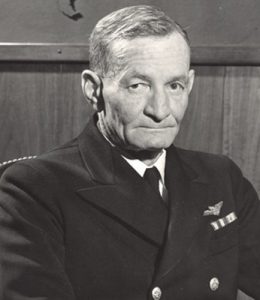 |
Three John S. McCains, father, son and grandson, serve as namesakes for DDG 56. John S. McCain, Sr. (1884-1945) (left), known as ‘Slew’ McCain, was a hard-charging aircraft carrier admiral who participated in actions from Guadalcanal in late 1942 through to task force raids on the Philippines, Formosa, Okinawa and the Japanese home islands. |
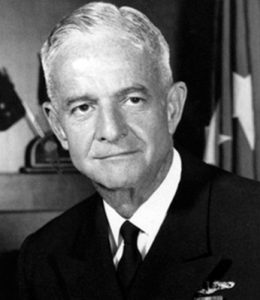 |
John S. McCain, Jr. (1911-1981) was a submariner during WW2, but moved first to amphibious warfare and then to staff positions. He became CINCPAC in 1968 and served in that role during the Vietnam years.
Appropriately, his son Arizona Senator John S. McCain III, a distinguished naval hero in his own right, was present at the christening of DDG 56 in September 1992. |
 |
John S. McCain, III (1936-2018) served on the U.S. Senate from 1987 to 2018. Before he worked in U.S government, he fought in the Vietnam War as a Navy pilot.
In 1967, after McCain survived a near-death experience in the Forrestal fire, his plane was shot down over Hanoi and he was captured by the North Vietnamese. When his father was named commander of U.S. forces in the Pacific in 1968, the North Vietnamese offered early release to McCain III as a propaganda ploy, but he refused to be released unless every American captured before him was also freed. After enduring years of torture and solitary confinement, McCain was finally released in 1973. For his bravery, he earned numerous service awards, including the Silver Star and the Legion of Merit. |
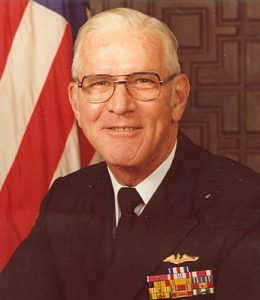 |
DDG 58’s namesake is (Father John Francis) Laboon (1921-1988). In WW2, he was awarded a Silver Star for heroism aboard the submarine USS Peto (SS 265). LT (j.g.) Laboon rescued a downed US aviator under heavy fire off the Japanese coast. He left the service at the end of the war and became a Jesuit priest, being ordained in 1956. He rejoined the Reserves in 1957 as a Navy chaplain, and was recalled to active service in 1958. For the next 22 years, he served worldwide, and was awarded the Legion of Merit with a combat ‘V’ for battlefield service in Vietnam in 1969 with the 3rd Marine Division. |
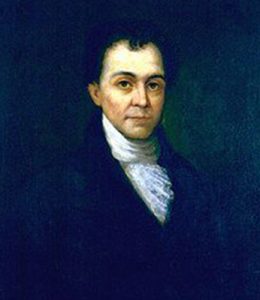 |
DDG 60’s Paul Hamilton (1762-1816) was the 3rd Secretary of the Navy. Born in South Carolina, he fought as a soldier in the Revolutionary War, then later became a planter and politician. He served as a state Representative, Senator, Controller and Governor. In 1809, President James Madison appointed him to the Navy position. During the 1812 War his preparations helped several victories over British warships. Hamilton was a proponent of military preparedness, especially sea fortifications. Unable to persuade Congress to expand the Navy, he retired in late 1812 and returned to Beaufort, SC. |
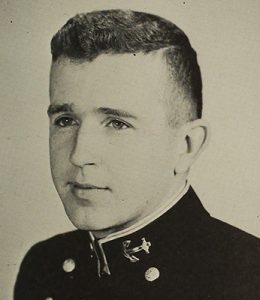 |
DDG 62’s (LT William C.) Fitzgerald (1938-1967) was awarded the Navy Cross for heroism during a pitched battle with Viet Cong guerillas in Vietnam in 1967. Born in Montpelier VT, he enlisted and served as a seaman on several destroyers before being accepted for the US Naval Academy. After further sea service, he was assigned as a senior adviser to the South Vietnamese army , working on coastal defense and interdiction of supplies. His small force fought a defensive action against two battalions of the enemy, and he gave his life to enable three surviving defenders to escape. |
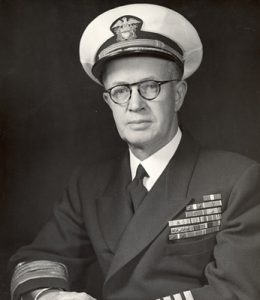 |
DDG 64’s (ADM Robert B.) Carney (1895-1990) served in World War I, in anti U-boat duty, and by the outbreak of WW2 had taken up convoy escort roles. As CO of the cruiser Denver he took part in operations in the Solomons, before becoming ADM William Halsey’s Chief of Staff for the rest of the war. He was deputy CNO after the war, then commander of NATO’s southern European foces, and finally CNO in 1953. After retirement he was joined industry, including being chairman of the (then) Bath Iron Works Corporation. |
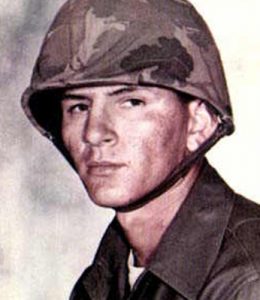 |
DDG 66’s (Alfredo Cantu “Freddie”) Gonzalez (1946-1968) was a US Marine sergeant from Edinburg, TX who was killed in Hue, Vietnam during the Tet Offensive. A rifleman and squad leader in Vietnam in 1965, he spent time as a guerilla warfare instructor at Camp Lejeune. Hearing of the massacre of a Marine platoon, including some comrades, he volunteered to return to Vietnam. During the intense Hue battle he fought for five days, refusing medical treatment although wounded several times, before being killed by a rocket. He received the Medal of Honor for his bravery. |
 |
DDG 68’s The Sullivans were five brothers in their twenties – George, Francis, Joseph, Madison, and Albert – who sailed together during the Pacific War, at their own insistence. Famous from newpaper and newsreel coverage before they saw action, they were tragically all lost at sea on the light cruiser Juneau at the Battle of Guadalcanal on November 13, 1942. Already hit once by a torpedo, the ship had turned back toward harbor at Espiritu Santo when it was torpedoed by a Japanese submarine and blew up. There were few survivors. |
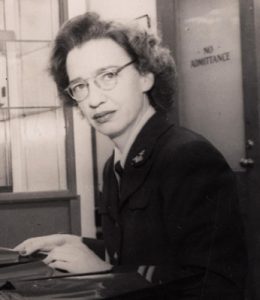 |
DDG 70’s (ADM Grace) Hopper (1906-1992) was a pioneer of computing. A graduate of Vassar College, and awarded a Ph.D. in mathematics from Yale, she taught at Vassar as an assistant professor until she volunteered for the Navy in 1943. She was stationed at the Bureau of Ships Computation Center at Harvard. At the end of the war, she was pushed to the Reserves as ‘too old’ at 38. It was during the following 20 years that she helped develop the first computer language compilers and the idea of machine-independent languages like COBOL and FORTRAN. She’s credited with inventing the term ‘computer bug’. Still a mere Commander in the 1980s, she was promoted to RADM by a special Presidential bill to Commodore (later RDML) in 1983. She was retired from the Navy in 1986 at the age of 79, and promptly joined Digital Equipment Corp, where she worked until her death at 85. |
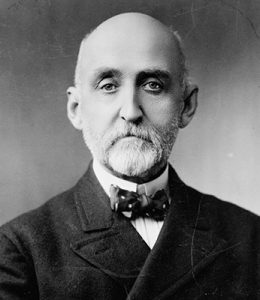 |
DDG 72 is the fourth US Navy ship to be named after (Alfred Thayer) Mahan (1840-1914). Widely recognized as the father of seapower doctrine, his most famous work is The Influence of Seapower on History, 1660-1783, written in 1890. Still widely read today, it argues that countries with greater naval power will have greater worldwide impact. Joining the Navy in 1861, he fought in several actions and remained with the force during peacetime, though not regarded as a particularly skilful shiphandler. In 1885 he became a lecturer at the Naval War College, and made the acquaintance of Theodore Roosevelt, later US President. Many more books followed, as did international fame as his ideas took hold. His influence is still felt today. |
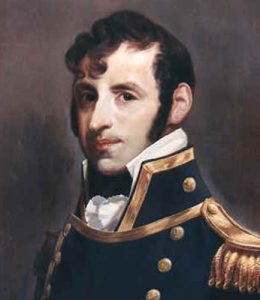 |
DDG 73’s Stephen Decatur (1779-1820)was a vigorous, daring hero of the US Navy’s first overseas expedition, against the Barbary pirates, and in the War of 1812. DDG 73 is the fifth Navy ship named for him. His first notable act of daring was to pilot a commandeered ketch into Tripoli harbor and to set fire to the USS Philadelphia, which had been taken by the pirates after running aground. This earned him a promotion to Captain at the age of 25. He fought in the War of 1812 against the British, both winning and losing, and ended up a prisoner in Bermuda in 1815. With the end of that war, the United States resolved to finish with the Barbary pirates, and to end tribute payments. Decatur was a key player as the pirate strongholds in Tangier and Tripoli were forced to yield. Decatur returned as a hero to the United States, but in 1820 was killed in a duel with a rival naval officer. |
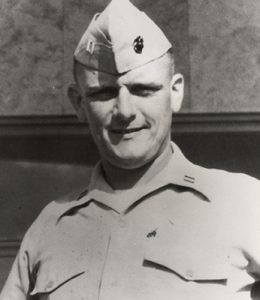 |
DDG 75’s Donald Cook (1934-1967) was a US Marine Captain who died in the captivity of the Viet Cong. Born in Brooklyn, he enlisted as a private in 1956, but was quickly assigned to Quantico for officer training. As a second lieutenant he was sent to Vietnam in 1963, but captured in December 1964. A prisoner for three years, he accepted the role of senior officer (even while not) and gave up health treatments and privileges to benefit other wounded comrades. Promoted posthumously to Colonel, he was awarded the Medal of Honor for his sacrifice. |
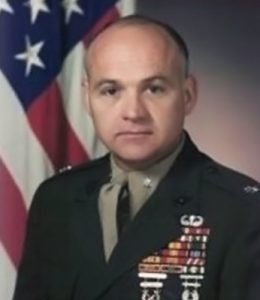 |
DDG 76’s (William “Rich”) Higgins (1945-1990) was a US Marine Colonel kidnapped and held captive for two years, then murdered by Hezbollah in the Southern Lebanon. He served two tours of duty in Vietnam in 1968-69 and 1972-73. After graduating from both the Air Force Staff & Command College and the Naval War College, he was military assistant to the Defense Secretary in 1985-87. His Lebanon mission was as part of a UN peacekeeping force. |
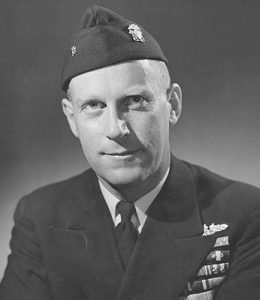 |
DDG 77’s (RADM Richard Hetherington “Dick”) O’Kane (1911-1994) was a submariner who participated in more attacks on Japanese shipping during WW2 than any other US commander. He was executive officer on five patrols by Wahoo in 1942-43, then became commander of Tang for five more patrols in 1943-44 during which 31 Japanese ships totalling 227,000 tons were sunk using innovative and bold tactics. One patrol included a daring foray into the Yellow Sea. Tang was sunk by one of her own faulty torpedoes off Fromosa in 1944, and O’Kane became a POW. He was awarded the Medal of Honor for his ‘conspicuous gallantry and intrepidity’ after he was released in 1945. |
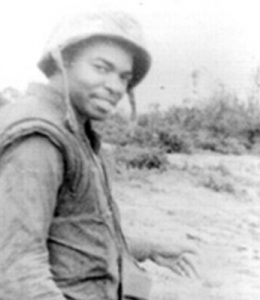 |
DDG 79’s (Pfc) Oscar Austin (1949-1969) was a US Marine killed in Vietnam in February 1969 near Da Nang. Born in Nacogdoches, TX he went to school in Phoenix, AZ, where he joined the Marine Corps. When his position was attacked, he left the safety of cover to rescue an wounded companion, and dived between him and a thrown grenade. Badly injured, he moved to protect the unconscious man again, getting between him and a Vietcong rifleman and receiving a mortal wound in doing so. He was awarded the Medal of Honor for ‘indomitable courage, inspiring initiative and selfless devotion to duty.’ |
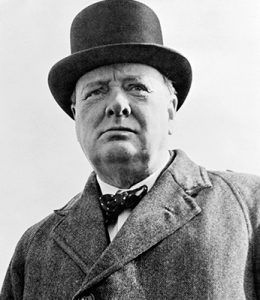 |
Winston S. Churchill (1874-1965) is the namesake for DDG 81. A British soldier, author, historian, war correspondent, politician, artist, orator and statesman, he was a decisive figure in World War 2: as British Prime Minister from 1940 through 1945, and as one of the “Big 3” Allied leaders. His naval credentials included two periods as First Sea Lord – the equivalent of SECNAV – during 1911-15 and 1939-40. His mother was American, and he had great respect for the ties between the two countries. |
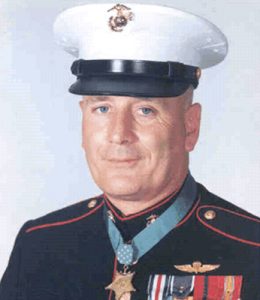 |
DDG 83’s namesake is (SSgt Jimmie E.) Howard (1929-1993), a Marine Corps sergeant who was awarded the Silver Star and Purple Heart for service in Korea, and later earned the Medal of Honor for his bravery at the nighttime Battle of Hill 488 in Vietnam in June 1966. Howard’s platoon of 15 Marines and two Navy corpsmen were dropped to observe movements in a hostile area, and were soon assailed by two Vietcong battalions — over 300 men. Badly wounded by a grenade, he continued distributing ammunition and encouraging his men to fight back, while directing air strikes. By the end of the action, 200 Vietcong died, but only six Marines. |
 |
DDG 85 is named for (CAPT David) McCampbell (1910-1996), the US Navy’s leading fighter ace of World War 2. After graduating from the Naval Academy in 1933, he served on a cruiser before qualifying as a pilot in 1938. In 1942, he was landing signal officer on the carrier USS Wasp when she was sunk at Guadalcanal. As commander of Squadron VF-15 and later Air Group 15 on USS Essex, he personally shot down 34 Japanese aircraft. Those included five Japanese carrier planes in one day at the ‘Marianas Turkey Shoot’ in June 1944, and nine in one day in October 1944. He was the only fast carrier task force pilot to be awarded the Medal of Honor. |
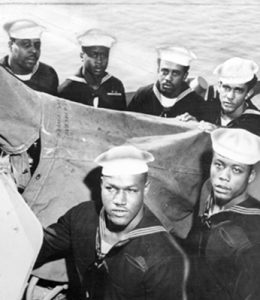 |
DDG 87’s choice of name has a unique story. Left, you see the crew of USS Mason (DE 529) at the snow-swept commissioning in Boston Navy Yard in March 1944. This destroyer escort was the first to have a predominantly black crew, at the specific request of the NAACP. The Navy wanted to recapture this historic moment, with a destroyer named for the crew. DE 529 itself was named for Newton Henry Mason, a Navy F4F Wildcat pilot killed in the Battle of the Coral Sea (1942). |
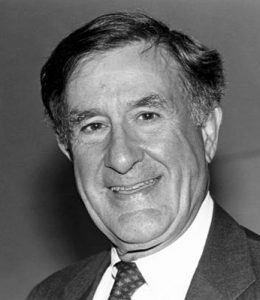 |
DDG 90 is named for (John Lester Hubbard) Chafee (1922-1999) who was in turn a US Marine Corps rifleman at Guadalcanal (1942) then a Lieutenant at Okinawa (1945). He studied law at Yale and Harvard but returned to the Marines as a rifle company commander. In civilian life he was a Rhode Island state representative (1956-62), Governor (1962-1969), then Secretary of the Navy (1969-1972), where he appointed ADM Elmo Zumwalt to CNO. He was a Senator for Rhode Island from 1976 until 1999. |
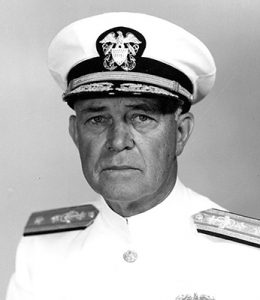 |
DDG 92’s VADM Charles M. (“Swede”) Momsen (1896-1967) was a submariner. Typically, US Navy submarines have been named for cities or states in recent years. Momsen’s contribution to the Navy was in the rescue of trapped submarine crews, as well as several other engineering innovations. Between 1919 and 1939, 200 US sailors died in 20 submarine sinkings. Momsen was inspired to first create a diving bell, then an escape lung that recycled a submerged swimmer’s air. Testing it himself to a depth of 200 feet in 1929 earned him the Distinguished Service Medal. Later he introduced helium substitution to air supplies to prevent nitrogen narcosis in divers. He actively directed the famous rescue of crew from the sunken sub Squalus in 1939. In World War 2 he helped solve the problem of defective torpedoes that had plagued the Navy, and later commanded a ‘wolfpack’ in the Pacific, and the battleship USS South Dakota. |
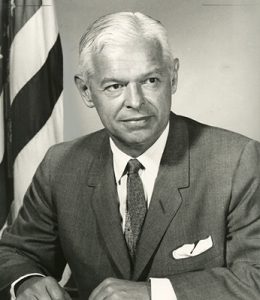 |
DDG 94 is named for Paul Nitze (1907-2004), who attended the christening of his ship, in April 2004. Born in Amherst, MA he graduated from Harvard and became a merchant banker. In 1940, he was called to government service and worked for ADM James Forrestal and Nelson Rockefeller, among others, during the war years. Post-war he taught and concentrated on strategy and security issues, but was also Secretary of the Navy from 1963 to 1967. Later, he focused on Strategic Arms Limitation Talks, and was an architect of a firm US policy toward the Soviet Union, contrbuting to the end of the Cold War. |
 |
DDG 96 is named for another famous figure in the early days of the US Navy, Commodore William Bainbridge (1774-1833). Born in Princeton, NJ his early career was checkered. He went to sea at 14, joined the Navy in 1798, and after several other unpromising episodes managed to run USS Philadelphia aground while blockading Barbary pirates in Tripoli in 1803. The ship was captured and Bainbridge held captive for 19 months. Stephen Decatur led a raid that later burned the ship. In 1812, Bainbridge redeemed himself with a successful action between the 44-gun USS Constitution and the 38-gun HMS Java. Excellent gunnery soon crippled and sank the poorly-crewed British ship. He later participated in the second Barbary War of 1815. DDG 96 is the fifth Bainbridge: the second was the first USN destroyer, DD-1. |
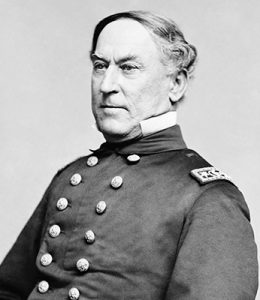 |
DDG 99’s ADM David G. Farragut (1801-1870) was a flag officer during the Civil War, and is known for the phrase: “damn the torpedoes, full speed ahead!” at the Battle of Mobile Bay in 1864 against Confederate forces. (Those ‘torpedoes’ were mines, in the parlance of the day). He first went to sea at the age of nine, as a Naval midshipman, and served until his peaceful death, a rare honor. His wartime engagements were all in the Gulf region with the West Gulf Blockading Squadron, including an attempt to force the passage of the Mississippi at Port Hudson, LA. The strategy of splitting the Confederacy finally succeeded, with the Navy having played a key role.. |
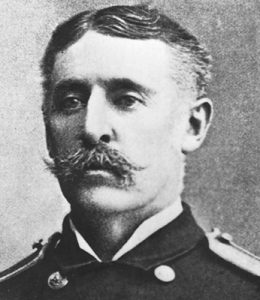 |
DDG 101 is named for CAPT Charles Vernon Gridley (1844-1898), and as a fresh graduate of the US Naval Academy he served under Admiral Farragut at the Battle of Mobile Bay (see above). After a varied career in the Navy, including being stationed on the Great Lakes, and at various ports around the world, Gridley found himself captain of USS Olympia, flagship of Admiral Dewey’s Pacific squadron. When the Spanish-American War broke out in 1898, the squadron blockaded and attacked Manila Bay in the Philippines. In the battle between the US ships and Spanish ships and forts, a decisive victory was achieved. Gridley died soon after in Kobe, Japan. He didn’t live to see the fame contained in Admiral Dewey’s memorable command at Manila: “You may fire when ready, Gridley.” |
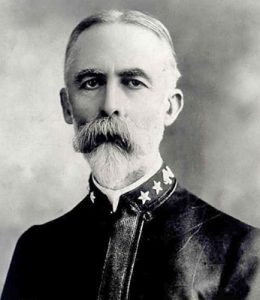 |
(RADM William T.) Sampson (1840-1902) is the namesake of DDG 102. Having survived the sinking of the monitor USS Patapsco in 1865, much of his later Naval career was spent ashore. He was an instructor at the Naval Academy, served with the Bureau of Navigation, commanded the cruiser San Francisco in 1982, and headed the Bureau of Ordnance in 1893-97. After heading the inquiry into the sinking of the battleship Maine in Havana in 1897, he became commander of the North Atlantic Squadron just as the Spanish-American War broke out. A decisive action against the Spanish fleet at the Battle of Santiago Bay followed the invasion of Cuba, and resulted in the sinking or capture of all of the enemy ships. |
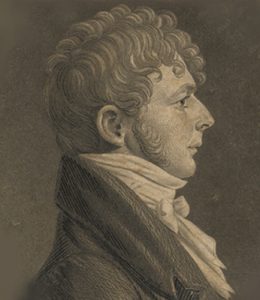 |
DDG 104’s LT Andrew Sterett (1778-1807) has been the namesake of four Navy ships, but he’s relatively little-known compared to other late 18th century captains. He went to sea in 1798 the Quasi War with French, aboard USS Constellation. Commanding a gun battery, Sterett was an active player as Constellation sank the French Insurgente, with 20 deaths. The only death on the US ship was a gunner run through with Sterett’s saber for deserting his post. After a couple more actions, Sterett found himself commander of USS Enterprise, and in 1801 on his way with a squadron to North Africa to confront the Barbary Pirates. Sterett’s ship captured dismasted and disarmed the brig Tripoli, in the first Naval victory of the war. Sterett left the Navy in 1803, disappointed at the loss of command of Enterprise to rising star Stephen Decatur. He joined the merchant marine, but died on a voyage to the Far East, and is buried in Lima, Peru. |
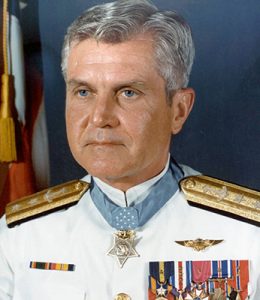 |
VADM James Bond Stockdale (1923-2005) gives his name to DDG 106. He is the most-decorated US Naval officer. A naval aviator, he was on board USS Oriskany during the Gulf of Tonkin Incident (1964) and flew missions against Vietnamese torpedo boats. Returning the next year as commander of an air wing on USS Oriskany, he flew A4 missions against North Vietnamese targets and was shot down in September 1965. He spent until 1973 in captivity, brutally mistreated as the senior US prisoner in Vietnamese hands, and for his defiant attitude and encouragement of his fellow prisoners. He was awarded the Medal of Honor on his return to the United States. He retired from the Navy in 1979, after heading the Naval War College. His subsequent career was as an author and teacher. |
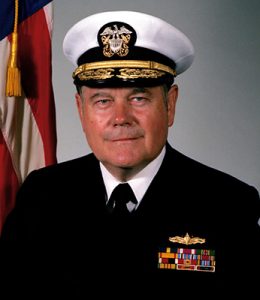 |
RADM Wayne E. Meyer (1926-2009) is known as the ‘Father of Aegis,’ and he attended the christening of DDG 108 in October 2008. An engineer by training, he was the driving force in bringing adequate anti-aircraft and anti-missile technology to ship defense. He headed the Aegis development program for thirteen years, and is remembered for the phrase: “Build a little, test a little, learn a lot.” Aegis is the key component in ship defense, and its importance in anti-ballistic missile operations is rapidly growing. Meyer personally attended the christening and commissioning of every Aegis-equipped vessel – cruisers and destroyers – until his death in October 2009, missing only the commissioning of his own ship. |
 |
CPL Jason Dunham (1981-2004) is the courageous namesake of DDG 109. This young Marine from Scio, NY sacrificed his life to save his companions when an insurgent pulled the pin on a grenade at a checkpoint near Al-Husaybah in Anbar province, Iraq in April 2004. Dunham dived on to the grenade, covering it with his helmet and his own body. Critically wounded, he was airlifted to Germany and then Washington, but could not be saved. For his bravery, he was posthumously awarded the Medal of Honor.
|
 |
ADM Raymond Spruance (1886-1969) was the greatest exponent of carrier warfare in the Pacific during World War 2. He was an engineer, and his first command was the Bath-built Aaron Ward (DD 132, in 1919). His task force’s stunning 1942 victory over the Japanese Fleet at Midway Island, where four enemy carriers were sunk, is recognized as a turning point in the war. He went on to devise the Navy’s ‘island hopping’ amphib strategy to recapture the Central Pacific and bring the war to the Philippines and Japan. A second stunning victory was the “Marianas Turkey Shoot” of 1944, which ended Japan’s carrier power. He later participated in the fall of Iwo Jima and Okinawa. Post-war, he was ambassador to the Philippines in 1952-55, at the personal request of President Truman. |
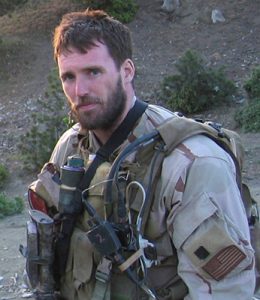 |
LT Michael Murphy (1976-2005) is the namesake of DDG 112. A Navy SEAL, this Long Island, NY native demonstrated great bravery and self-sacrifice during Operation Red Wings in northeastern Afghanistan in June 2005. He and three other SEALS were searching for a Taliban leader when they were ambushed by a force of at least forty heavily-armed guerillas. He earned his Medal of Honor when, heavily wounded, he moved to open ground to radio for assistance and rescue. |
 |
SGT Rafael Peralta (1979-2004) is the namesake of DDG 115. Born in Mexico City, he joined the United States Marine Corps as soon as he had a green card in 2000 and later became a US Citizen. In 2008, SGT Peralta was deployed in Iraq with 1st Platoon, Company A, First Battalion, Third Marines, Regimental Combat Team 7, First Marine Division to participate in Operation Iraqi Freedom. SGT Peralta was killed on NOV 15, 2004 in house-to-house urban warfare in the second battle of Fallujah and was awarded the Navy Cross for his actions. |
 |
Captain Thomas Hudner (1924-2017) is the namesake of DDG 116. As a former Naval aviator, he received the Medal of Honor for his actions while trying to save the life of his wingman, Ensign Jesse L. Brown, during the Battle of Chosin Reservoir in the Korean War on December 4, 1950. Hudner and Brown were among a group of pilots on patrol near the Chosin Reservoir when Brown’s Corsair was struck by ground fire from Chinese troops and crashed. In an attempt to save Brown from his burning aircraft, Hudner intentionally crash-landed his own aircraft on a snowy mountain in freezing temperatures to help him. Despite these efforts, Brown died of his injuries and Hudner was forced to evacuate, having also been injured in the landing. |
 |
Daniel Inouye (1924-2012) is the namesake of DDG 118. He served his nation as a U.S. senator, U.S. representative and an infantryman with the U.S. Army’s 442nd Regiment, whose battlefield valor earned him the Medal of Honor.
On April 21, 1945, near San Terenzo, Italy, 2nd Lt. Daniel Inouye led his platoon in an attack on a German position on a ridge overlooking an important road junction. Inouye directed his squad through automatic weapon and small arms fire to within 40 yards of three machine gun positions. He crawled to within five yards of the nearest machine gun and hurled two grenades, destroying the emplacement. He then stood up and neutralized a second machine gun nest. Wounded by a sniper’s bullet, 2nd Lt. Inouye continued to fight at close range until an exploding grenade shattered his right arm. He refused evacuation and continued to direct his platoon until enemy resistance was broken. In the attack, 25 enemy soldiers were killed and eight captured. Daniel K. Inouye received the Medal of Honor for his extraordinary heroism and devotion to duty. |
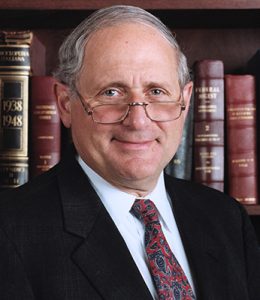 |
Carl M. Levin is the namesake of DDG 120. He is the former chairman of the Senate Armed Services Committee and the longest serving U.S. Senator from Michigan. Sen. Levin represented Michigan in the U.S. Senate from 1979 to 2015. During his 36 years in the Senate, Levin was a member of the Senate Committee on Armed Services and its chair for more than nine years. He also served as chairman of the Permanent Subcommittee on Investigations, as a member of the Committee on Homeland Security and Governmental Affairs, and Committee on Small Business and Entrepreneurship. He led the Senate in the adoption of the Defense Authorization Acts from 2007 through January 2015 when he retired from the Senate. |
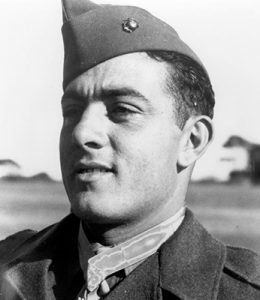 |
Gunnery Sgt. John Basilone (1916-1945) is the namesake of DDG 122. He was awarded the Medal of Honor for heroism during the Battle of Guadalcanal and was the only enlisted Marine to receive both the Medal of Honor and the Navy Cross during World War II.
John Basilone enlisted in the Marine Corps on June 3, 1940, after serving three years in the U.S. Army with duty in the Philippines. He was deployed to Guantánamo Bay, Cuba, and in August 1942, he took part in the invasion of Guadalcanal. In October, he, and two other Marines manning two other machine guns, held off approximately 3,000 Japanese soldiers until the attack ceased. In February 1945, he was killed in action on the first day of the invasion of Iwo Jima, after he single handedly destroyed an enemy blockhouse and led a Marine tank under fire safely through a minefield. |
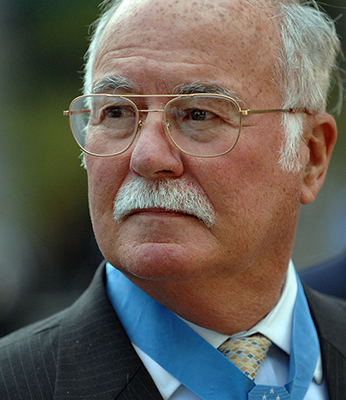 |
Harvey C. Barnum Jr., a 1st lieutenant Marine artillery forward observer during the Vietnam War in 1965, was with a company that came under intense fire and became separated from the rest of the battalion. When he found the rifle company commander mortally wounded and the radio man dead, Barnum strapped the radio to himself and took charge of the company. He led a counterattack against the positions that were shooting at them. According to his Medal of Honor citation, Barnum’s “sound and swift decisions and his obvious calm served to stabilize the badly decimated units and his gallant example as he stood exposed repeatedly to point out targets served as an inspiration to all.”
Barnum directed an attack bolstered by two armed helicopters against the firmly entrenched enemy. Once a small area was cleared, he directed the helicopter evacuation of the dead and wounded before assisting in the final seizure of the battalion’s objective. |
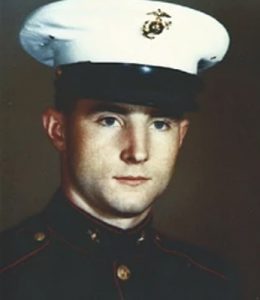 |
Lance Cpl. Patrick Gallagher (1944–1967) is the namesake of DDG 127. In 1966, Gallagher, who immigrated from Ballyhaunis, Ireland in 1962, joined the Marine Corps where he served in H-Company, 2nd Battalion, 4th Marine Regiment, 3rd Marine Division during Operation Hastings in the Republic of Vietnam. Gallagher was awarded the Navy Cross for his actions on July 18, 1966, when he selflessly threw his body on an incoming grenade, shielding his fellow Marines. He quickly pitched the grenade to a nearby river where it safely exploded out of harm’s way, without injury to himself or others. Gallagher was killed in action one year later in DaLoc near De Nang on March 30, 1967. He is one of only 30 known Irish citizens to have died in the Vietnam conflict. |
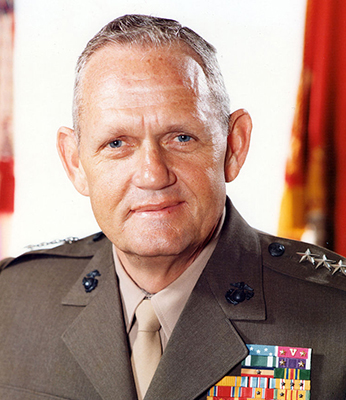 |
Gen. Louis H. Wilson Jr. (1920-2005) is the namesake of DDG 126. On July 25, 1944 in Guam, his unit was ordered to retake a portion of Fonte Ridge from Japanese forces. Wilson initiated his attack and despite heavy machine gun and rifle fire, his unit advanced up 300 yards of rugged hillside. Although Wilson was wounded three times over five-hours, he continued leading attacks against the enemy before going to the company command post for medical attention. Soon after the enemy launched a series of counterattacks and he rejoined the fight, repeatedly exposing himself to shrapnel and bullets and even dashing fifty yards into the open to rescue a wounded Marine. After 10 hours of fighting, Wilson’s unit managed to fend off the Japanese attacks. He then organized and led a seventeen-man patrol further up the ridge into intense enemy fire to successfully seize vital ground. He earned the Medal of Honor for “indomitable leadership, daring combat tactics, and valor in the face of overwhelming odds.” |
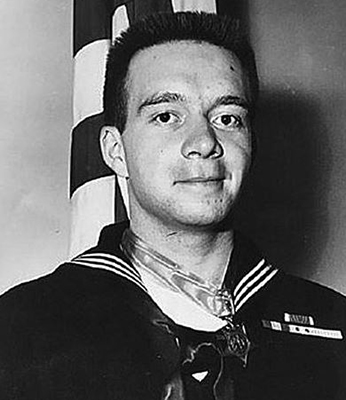 |
Master Chief Hospital Corpsman William Charette (1944–1967) is the namesake of DDG 130. Two days before his 21st birthday, Charette was providing aid to a wounded Marine when an enemy grenade landed nearby. He laid on top of the Marine to shield him from the blast and was knocked unconscious. When he woke up, he continued to provide aid to injured Marines, using torn parts of his uniform to dress battle wounds, shielding a wounded Marine with his battle vest and exposing himself to incoming rounds to carry the wounded to safety. Charette put himself in harm’s way during intense combat to render aid to Marines in need and his effort saved lives. He was awarded the medal for heroic actions “above and beyond the call of duty.” |
